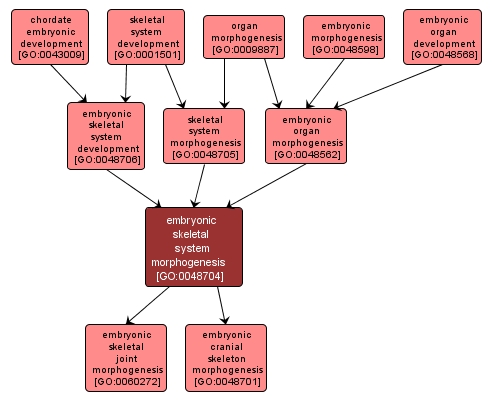GO TERM SUMMARY
|
| Name: |
embryonic skeletal system morphogenesis |
| Acc: |
GO:0048704 |
| Aspect: |
Biological Process |
| Desc: |
The process by which the anatomical structures of the skeleton are generated and organized during the embryonic phase. Morphogenesis pertains to the creation of form. |
Synonyms:
- embryonic skeletal morphogenesis
|
|

|
INTERACTIVE GO GRAPH
|














